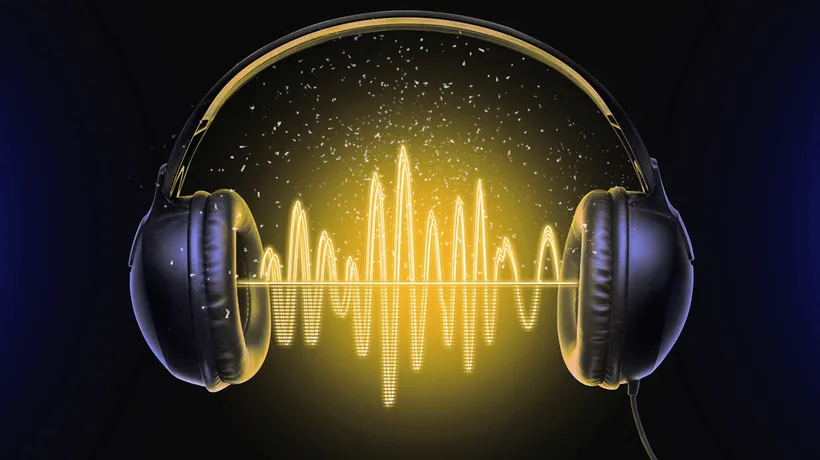The 2024 Guide to Realistic Text-To-Speech Software

Navigating the Soundscape: A Focus on Realistic Text-To-Speech Software of 2024
The year 2024 marks a notable chapter in the evolution of text-to-speech (TTS) technology, driven by breakthroughs that have dramatically enhanced the realism of synthetic voices. With advancements in deep learning (DL) and artificial intelligence (AI), TTS software has transcended previous limitations, achieving voice outputs that are not just clear and intelligible but also rich with natural intonation and emotional range. For American university research scientists and laboratory software engineers, particularly those in the age bracket of 30 to 50 years with skills in TTS API and software development platforms like Python, Java, and Javascript, these innovations represent more than technological triumphs—they offer new horizons in user interface design, accessibility, and personalized digital interactions.
As we delve into the premier TTS applications of the year, questions arise regarding which software offers the most lifelike experience or which AI-powered voice generator can deliver bespoke vocal qualities tailored to diverse use cases. The best TTS software of 2024 distinguishes itself through features that capture the subtlest nuances of speech, providing users with a suite of options to create content that speaks volumes, from dynamic educational resources to immersive gaming environments. This focus on heightened realism and user accessibility has led to TTS systems that not only speak to us but do so with a fidelity previously unattainable, charting a course for the future of seamless human-computer verbal exchanges.
| Topics | Discussions |
|---|---|
| Spotlight on TTS Technology | An exploration of the latest advancements in text-to-speech software, showcasing the tools leading the charge in audio synthesis. |
| Crafting the Voice of Tomorrow: Best TTS Software of 2024 | Detailed review of the software recognized for significant contributions to realism in TTS, and their innovative features that reshape the future of digital communication. |
| Collating Tools for Developers and Podcasters | Insights into TTS software with specialized functionalities tailored to developers and podcasters, enabling intricate control over voice generation. |
| Technical Guides for Unreal Speech API | Step-by-step guides on how to integrate Unreal Speech API into development projects for Python, Java, and Javascript users. |
| Optimizing User Experience: Best Practices in TTS Applications | Understanding the criteria that set apart the best TTS software, from AI capabilities to user-centric design, that cater to vivid consumer needs. |
| Common Questions Re: Most Realistic TTS | Addressing frequently asked questions regarding the quest for the most lifelike and realistic TTS voices available in the market. |
Spotlight on TTS Technology
In the burgeoning field of text-to-speech (TTS) technology, the advent of advanced software in 2024 signals a transformative era for voice synthesis. A clear and precise understanding of the foundational terms is essential for specialists working on these developments. For research scientists and software engineers focused on creating realistic vocal experiences, being literate in the core jargon allows them to exploit the full potential of TTS software, which now stands on the cusp of replicating human speech with uncanny likeness. Below is a glossary that serves as your compass through the intricate landscape of the most realistic TTS technology.
TTS (Text-to-Speech): A technology that converts text into spoken voice output, employing synthetic voices to mimic human speech.
DL (Deep Learning): A subset of ML techniques that use complex neural networks to enable computers to learn from data in ways that mimic human brain function.
AI (Artificial Intelligence): The simulation of human intelligence in machines, especially computer systems, often used to generate lifelike speech in TTS applications.
Natural Intonation: The variation in pitch during speech that contributes to the expression and meaning, crucial for achieving realistic voice synthesis.
Emotional Range: The scope of expressiveness in synthesized speech, such as joy, sadness, anger, allowing TTS software to sound more human-like.
User Interface (UI): The layout and design through which users interact with software, crucial for ensuring accessibility and efficiency in TTS applications.
API (Application Programming Interface): A set of protocols and tools that allow different software components to communicate, enabling developers to integrate TTS functionality into apps and services.

Crafting the Voice of Tomorrow: Best TTS Software of 2024
In an article updated on November 22, 2023, by John Loeffler, with insights from Luke Hughes and Steve Clark, a detailed list of the best TTS software of 2024 was presented, meticulously evaluating each for its unique contributions to the field. Highlighted in the TechRadar article, these tools are recognized for their overall excellence and the realism they bring to speech synthesis. The piece focusses on critiquing each offering’s ability to produce speech that is inherently lifelike, as well as assessing their ease of use for a wide demographic of developers and content creators, thereby assisting users in selecting a TTS solution that aligns with their needs.
The consumer cohorts span from casual creators seeking straightforward solutions to enhance their digital presence, to software developers and podcasters requiring advanced capabilities. The article likely details considerations such as API access, which enables developers to seamlessly integrate TTS into their applications, and customization features permitting a high degree of control over the audio output. This way, whether one's priority is the authenticity of the audible product or the adaptability of the tool to complex project workflows, the review serves as a critical instrument for informed decision-making.
Given the scope of the audience and the nuanced demands for TTS technology, the article seems to amalgamate hands-on testing with theoretical expertise to dissect the core competencies of each software. Without the full read, finer details remain obscured, yet the article’s emphasis on quality and realism suggests thorough testing against real-world scenarios. Review authors' affiliations or backing institutions, potentially influential in their analysis, are not mentioned but might have contributed to their evaluative framework, focusing on how closely AI-generated speech can emulate intricate human vocal characteristics.
Collating Tools for Developers and Podcasters
The article's recognition of distinct TTS software for developers and podcasters implies an evaluation based on criteria tailored to the sophisticated technical requirements of these user groups. Developers seek robust APIs and customization options that allow for deep system integration and the ability to manipulate voice characteristics programmatically, catering to diverse application demands. Podcasters, conversely, require TTS tools that offer superior voice quality and control over nuanced vocal expressions to produce engaging and dynamic content.
In discerning the 'Best for developers' and 'Best for podcasting' categories, the article likely delves into aspects such as the extensibility of the software, the quality of the developer documentation, and the versatility of the voices available, including the range of languages, accents, and emotion modulation features. These factors are instrumental in determining the TTS toolset that can best harmonize with a developer's or podcaster's workflow and the specific genre of content they aim to create.
Given the rapidly advancing landscape of TTS, tools that stand out in these segments are expected to wield cutting-edge AI and machine learning technologies to push the envelope of what's attainable in synthetic voice generation. They may also present innovative solutions that reduce time and resource investment while delivering high-quality outputs, essential for streamlining production and enhancing the creative process.
Technical Guides for Unreal Speech API
Getting Started with Unreal Speech API in Python
To integrate the Unreal Speech API into a Python application, the 'requests' library is used to communicate with the '/stream' endpoint. This endpoint promptly processes up to 1,000 characters of text and returns synthesized speech data which can then be saved as an audio file. Below is a Python code snippet demonstrating this interaction with the Unreal Speech API, highlighting both the ease of use for developers and the rapid, synchronous response provided by the service.
import requests
response = requests.post(
'https://api.v6.unrealspeech.com/speech',
headers = {
'Authorization' : 'Bearer YOUR_API_KEY'
},
json = {
'Text': '''<YOUR_TEXT>''', # Up to 3,000 characters
'VoiceId': '<VOICE_ID>', # Scarlett, Dan, Liv, Will, Amy
'Bitrate': '192k', # 320k, 256k, 192k, ...
'Speed': '0', # -1.0 to 1.0
'Pitch': '1', # 0.5 to 1.5
'TimestampType': 'sentence' # word or sentence
}
)
print(response.json())Integrating Unreal Speech API into Java and JavaScript Projects
For JavaScript and Java programmers looking to employ the Unreal Speech API, the process is similar. One can leverage the 'axios' library in a Node.js environment to make a post request to the API. Upon a successful response, the streamed audio data can be piped directly into a file, making this integration straightforward for both web and server-side applications. The following JavaScript code sample provides a step-by-step guide for this process, encapsulating the power of Unreal Speech's API to develop rich audio experiences for users.
const axios = require('axios');
const headers = {
'Authorization': 'Bearer YOUR_API_KEY',
};
const data = {
'Text': '<YOUR_TEXT>', // Up to 3,000 characters
'VoiceId': '<VOICE_ID>', // Scarlett, Dan, Liv, Will, Amy
'Bitrate': '192k', // 320k, 256k, 192k, ...
'Speed': '0', // -1.0 to 1.0
'Pitch': '1', // 0.5 to 1.5
'TimestampType': 'sentence', // word or sentence
};
axios({
method: 'post',
url: 'https://api.v6.unrealspeech.com/speech',
headers: headers,
data: data,
}).then(function (response) {
console.log(JSON.stringify(response.data));
});
In these guides, programmers are supplied with the key steps to take full advantage of the Unreal Speech API's capabilities, from initial set-up to the final production of audio outputs.
Optimizing User Experience: Best Practices in TTS Applications
Unreal Speech's text-to-speech (TTS) synthesis API emerges as a game changer in the industry, particularly impressive for its cost-effective solution that slashes TTS expenses by up to 90%. Academic researchers are poised to benefit significantly from these budget-friendly options, which enable a higher volume of textual data to be converted to speech for various experimental and educational purposes. This advantage is particularly valuable in fields that demand extensive audio material, such as language studies, cognitive science research, and accessibility testing.
Software engineers and game developers will find the Unreal Speech API notable for its cost-effectiveness, allowing for more expansive integration of TTS features into applications. The high-quality output, combined with low latency and high uptime, ensures that TTS can be incorporated into interactive games and software that require reliable, real-time speech generation. For developers working with large volumes of content, such as processing thousands of pages per hour, the volume discounts present an opportunity for extensive use without prohibitive costs.
Educators can leverage the API to create a more inclusive and dynamic learning environment, particularly beneficial for students who are visually impaired or have learning disabilities that favor auditory learning styles. With per-word timestamps and the expected multilingual support, educational content can be tailored to enhance comprehension and engagement. Furthermore, the user-friendly aspect of the API makes it accessible not just to programmers but also to content creators who may not have extensive technical backgrounds but wish to include high-quality voiceovers in their educational materials.
Common Questions Re: Realistic Voice TTS
What Qualifies as the Most Realistic Sounding Text-to-Speech?
The most realistic sounding text-to-speech systems are those that leverage intricate deep learning algorithms and extensive training datasets to ensure that the nuances of human speech are accurately captured and reproduced.
Finding the Optimum in Realistic AI Voice Technology
To find the optimum in realistic AI voice technology, one should look for TTS platforms that not only provide high-quality voice samples but also offer detailed customization options for pitch, speed, and intonation, allowing the synthetic voices to be tailored to specific needs.
Redefining Realism in Text-To-Speech: Practical Guidelines
Redefining realism in text-to-speech involves utilizing cutting-edge AI to produce voices that deliver clarity, naturality, and the capacity for expressive modulations closely mirroring human interactions.